8 steps for preparing your yard for winter
Time to turn over a new leaf
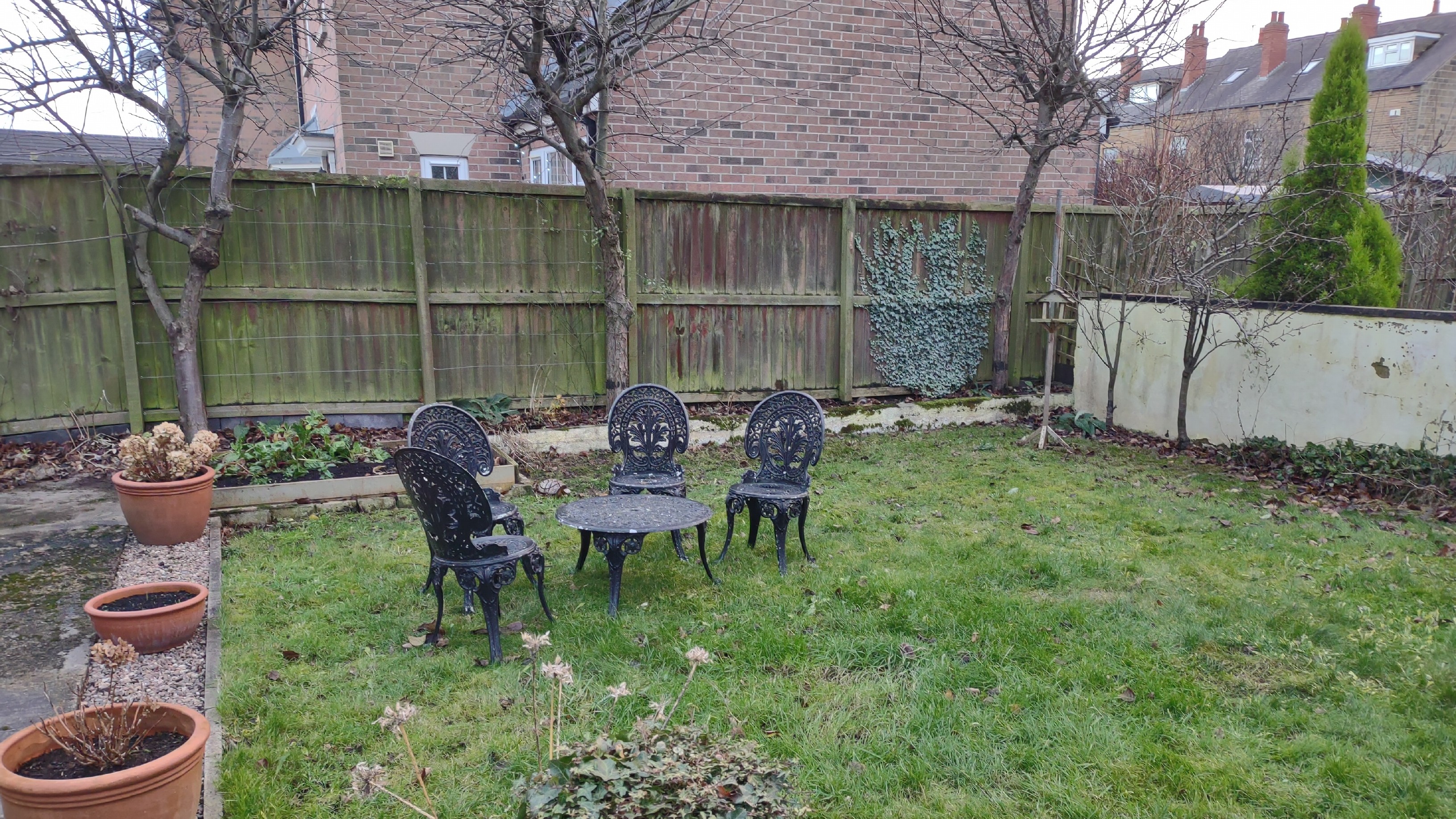
When you think about gardening, you probably don’t picture yourself doing the work in the winter. During this season of short days and cold weather, all that’s vibrant and colorful in your yard can feel a world away.
However, Mother Nature thinks long-term – and us gardeners can do the same. As fall comes to an end, there are lots of things you can do to prepare your yard for the colder (freezing) months, which is not just sowing grass seed in winter, with one eye always on the spring that will follow.
In this article, I’ll talk you through some of the things I’ve done to get my yard ready for the end of the year – from pruning dahlias and protecting roses with mulch, to overseeding the lawn and winterizing my lawnmower. Hopefully it’ll give you some good ideas to help with looking after your own yard this winter.
8 steps for a clean and protected yard
1. Cut back perennial plants
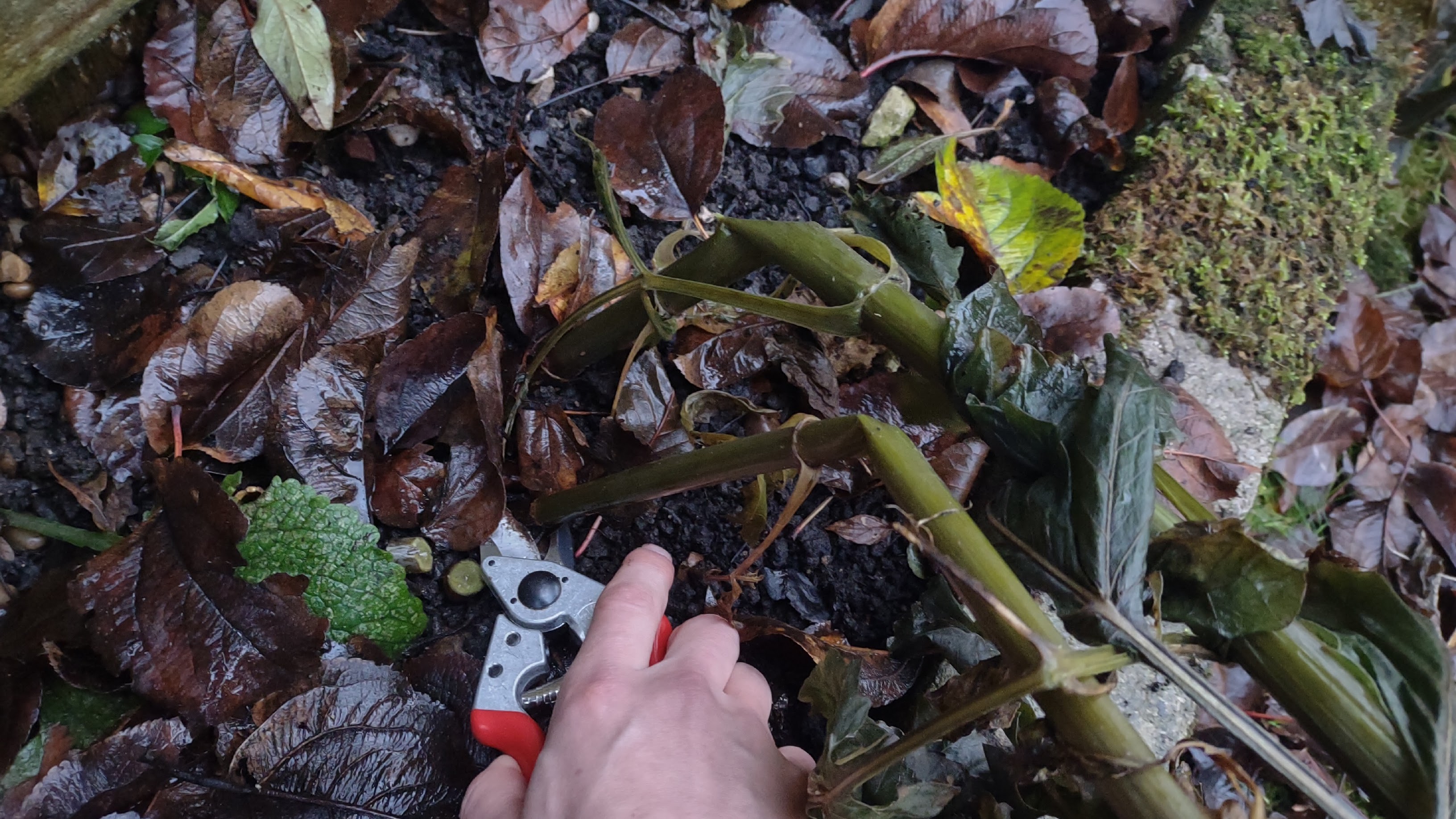
If you have perennial plants, you’ll surely be hoping that they will survive into the new year.
In some cases, perennials will benefit from being pruned right back to ground level before winter. This is especially true when the above-ground part of the plant dies and starts to rot before the winter.
I have some dahlias in my yard, and certain species of this plant do benefit from being cut back to the bottom of the shoot before winter. For these ‘geophytes’ – plants that store resources in a bulb below the ground – pruning to the shoot with a pair of Felco F6 pruners (from Amazon) for example can help prevent rot from traveling down to the precious bulb itself.
Not all perennial plants should be pruned to such an extent before winter. It all depends on your local climate and the species of plant, so you should check the specifics before you cut.
Sign up to receive the latest news, reviews, buying guides and deals direct to your inbox
Some perennials, like hydrangeas, can benefit from keeping their seed heads over winter, as these provide some protection from frost.
While you’re cutting back some of your perennials, you might want to take a moment to control garden weeds too – either by uprooting them or via a more intensive treatment.
2. Clear out dead annuals from pots and containers

If you’re anything like me, you probably haven’t got around to removing dead annual plants from your plant pots and other containers yet. Now would be a good time to do so! Dig out the plants, roots and all, using a suitably sized gardening fork (like this Corona garden fork at Amazon).
Any soil or potting mix which does not contain roots or other plant matter can be reused, so you should add this leftover material to your stockpile. Alternatively, you can leave the soil in the pot.
It’s a good idea to clean containers with soapy water after emptying them, as this should remove traces of pests or microbes that may harm the next plants to occupy the pot or planter. (I forgot to clean my plant pots this year – oops! I’ll let you know if I end up regretting it in the spring…)
3. Gather up excess leaves

The clue’s in the name: it’s smart to leave some fallen leaves on your lawn and garden beds over winter, as they will enrich the soil with nutrients as they decompose.
However, you can definitely have too much of a good thing. Excessive build-up of fallen leaves will starve grasses and other plants of light and water, leaving parts of the yard bare and muddy.
Where fallen leaves are piled up, or where they are obviously blocking light to an area of the yard, sweep up most of the leaves using a tool such as a garden rake.
If you collect the leaves at the end of cleanup and seal them in a bin liner, they will slowly turn into a nourishing leafmould, which you can use as compost within 1-2 years.
4. Plant bulbs ready for the spring

There are a few types of bulb that you can still plant early in the winter, ready to bring some color to the yard when spring comes around.
In my case, I planted my newly-emptied plant pots with tulip bulbs. I built up each pot with a piece of broken slate at the bottom (to regulate its drainage); followed by a layer of soil; a layer of bulbs; another layer of soil; and another layer of bulbs; with more soil on top. To make sure the bulbs could all sprout in the right direction, I was sure to position them with the shoot pointing skywards!
5. Add mulch to keep plant roots happy
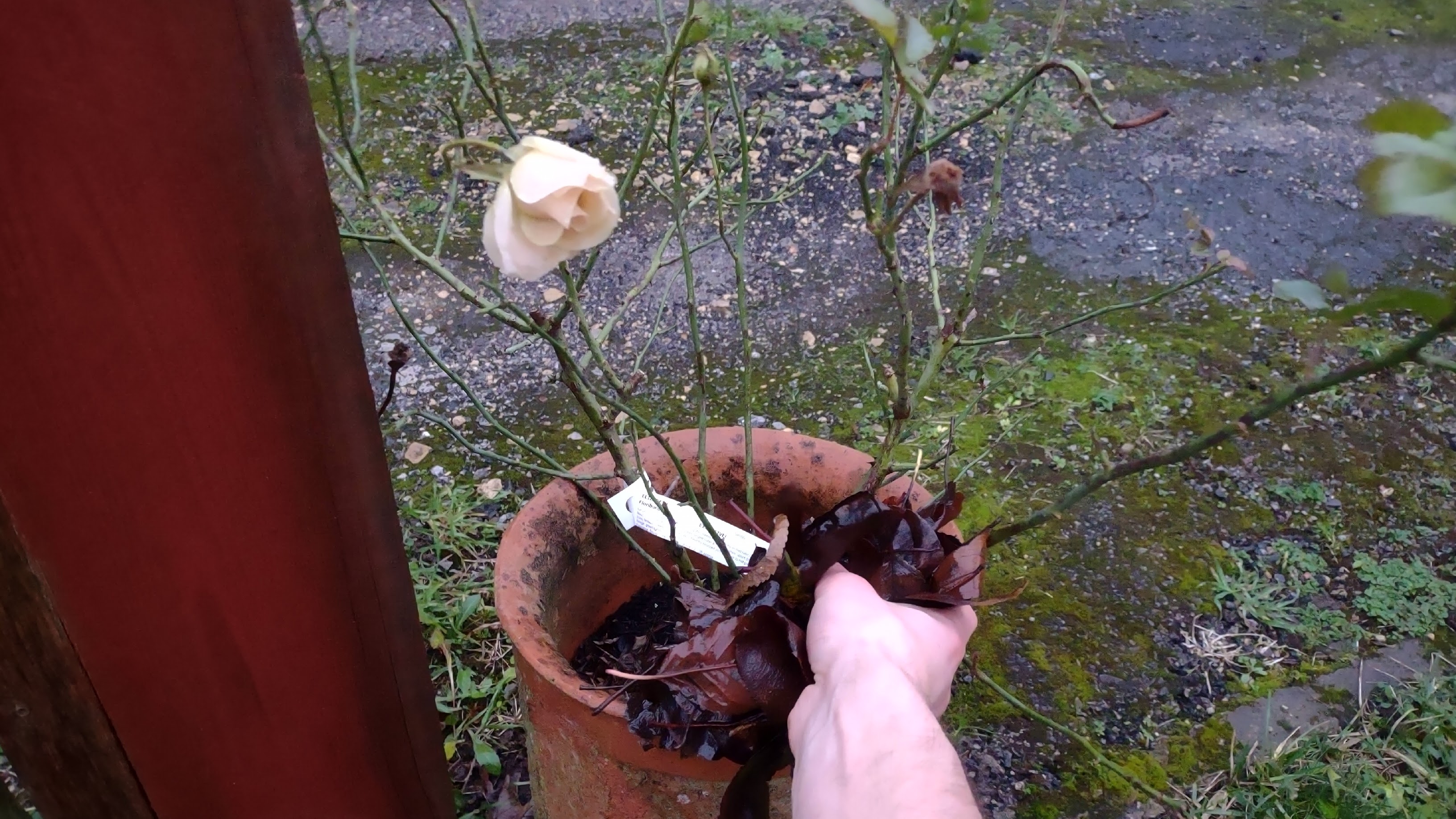
Mulch is any covering (usually of organic origin) of loose material layered over the topsoil around a plant. While mulches have various roles, including supplying nutrients and blocking weed growth, they have a special function in the winter: limiting frost damage.
I have a rose in my yard that shares a name with my mother – ‘Elizabeth’ – so I was especially keen to take good care of this plant over the winter. I packed the top of its pot with fallen leaves – a great natural mulch that will form a barrier between the cold weather and the topsoil.
6. Consider overseeding the lawn
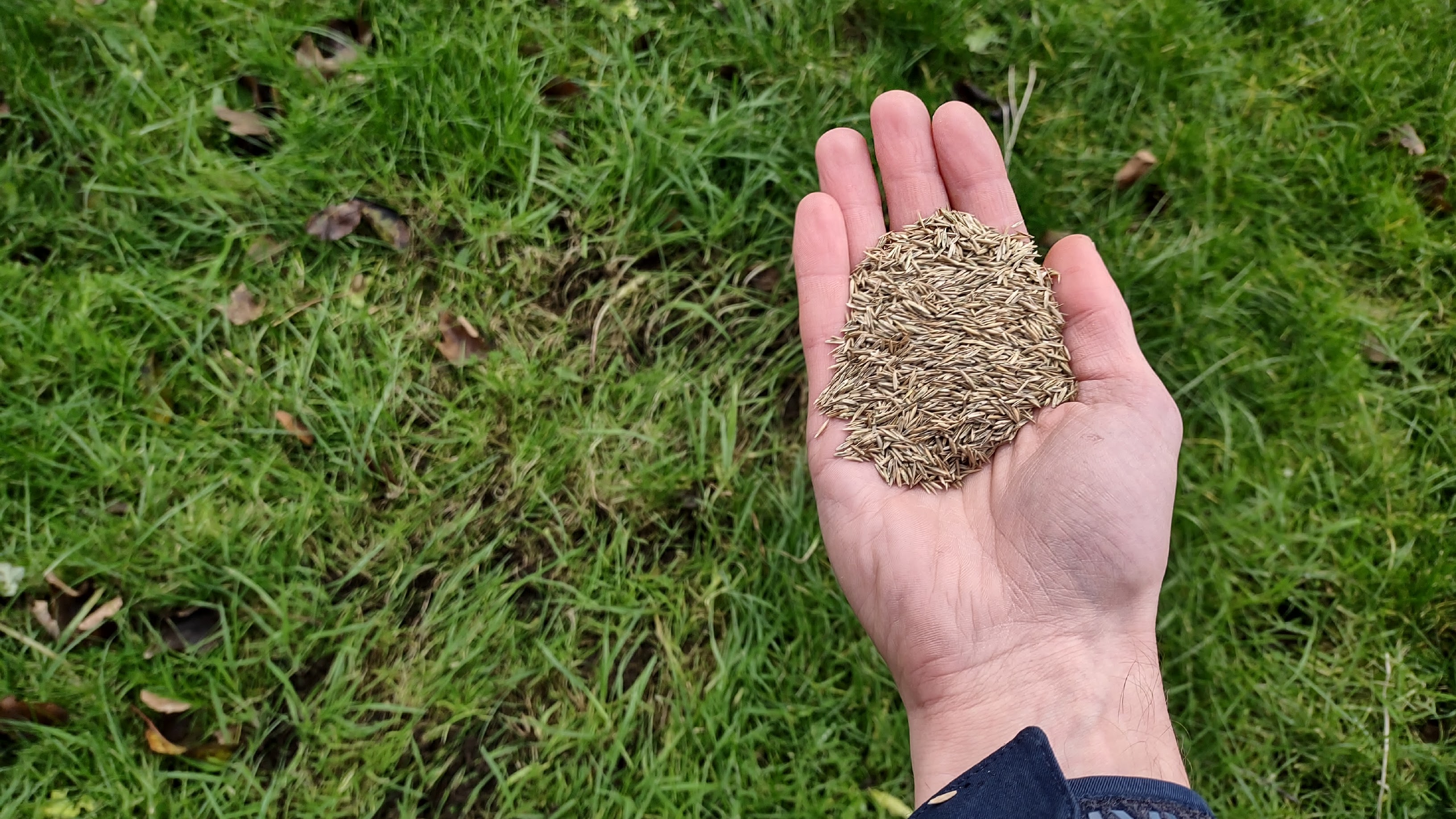
Contrary to popular opinion, it’s possible to sow grass seed over winter – especially if you’re using a fast-growing seed that can handle cold weather. For more insight, we have a more detailed guide on how to overseed your lawn.
I waited for a relatively mild and dry period in December, then lightly dethatched the lawn and sowed some extra grass seed to fill out some thin patches in my lawn. With a bit of luck, some of the seeds will contribute to a thicker, healthier lawn by springtime.
We wouldn’t recommend sowing any type of grass seed in very wet weather, or when temperatures are below 43 ℉.
7. Winterize your yard tools
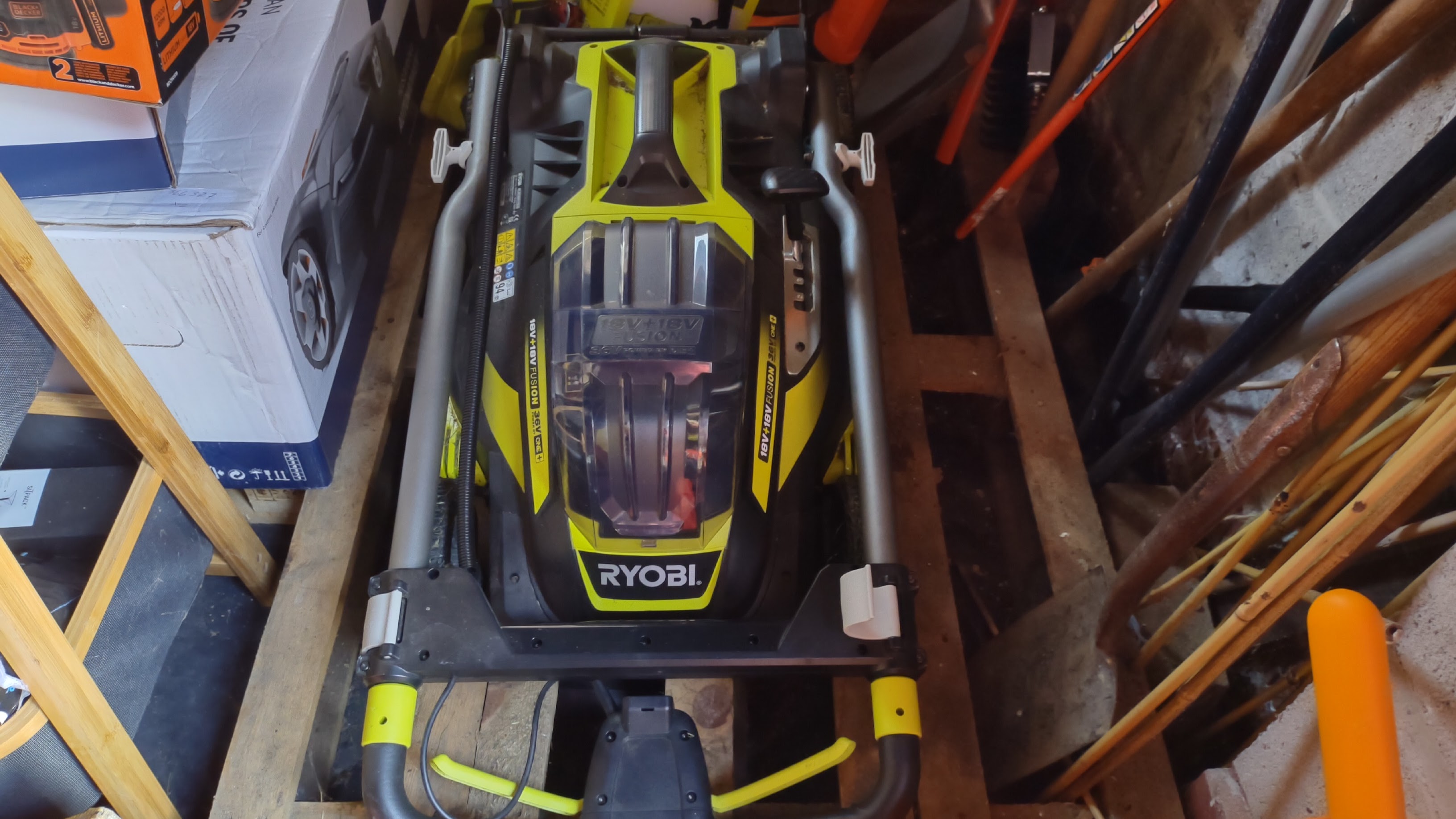
How well you attend to your tools at the end of the year will greatly affect their chance of working correctly in spring.
All sorts of tools benefit from special treatment before winter storage, from hand tools like the best pruners and rakes to power tools like lawnmowers and chainsaws.
As a general rule, you should always make sure a tool is clean and dry, before you put it into winter storage.
Some tools take more effort to ‘winterize’ than others. For instance, there are several steps to storing a lawnmower for winter. With gas-powered tools, it’s often recommended to add stabilizer to the fuel tank, if you’re going to leave some fuel in there over the colder months.
Whatever their power source, make an effort to read the instruction manual for each of your yard tools, and follow any maintenance processes specified.
8. Tidy the yard

Once you’ve done everything you can to protect your tools and help your plants over the winter, you can turn your attention to tidying. As The Expert Gate Company notes:
“This is a good time to clean down patios and brickwork, ideally with a pressure washer if you have one. Doing this later on when the weather is colder can lead to ice, which obviously poses a health hazard, so it’s a job better done sooner rather than later.
“Patios and pathways that are left uncleaned for too long can accumulate dirt and moss that can make them much easier to slip on, so get them cleaned not only to have them looking fresher but for your own safety as well.”
Making the effort to prepare your yard for the winter is an investment – and it can certainly feel like one when you’re working outside in the cold. Be sure to wrap up warm, and take care when the ground is icy. Your reward will be a brighter and more beautiful spring.

Pete has reviewed hundreds of gardening products for titles including TopTenReviews, Ideal Home and the London Evening Standard, as well as writing articles on diverse topics for other publications such as The Guardian and BBC Good Food. Pete loves spending time in his yard – although, having just read The Day of the Triffids by John Wyndham, he is regarding his plants with a newfound suspicion.
